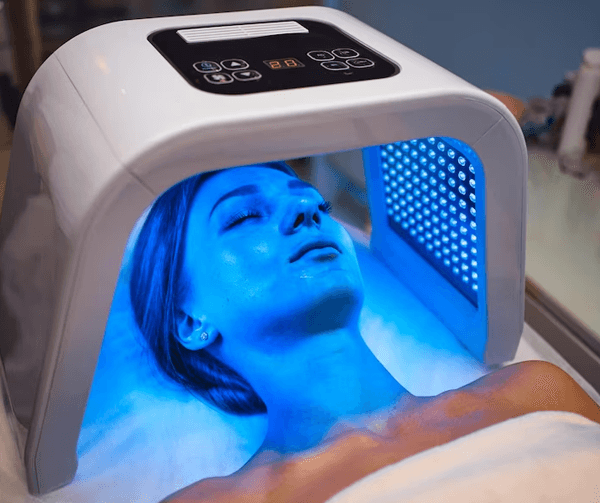Treating Skin Cancer
Dr. Renu Kothottil | April, 25 2016 | 0 Comments
There was once a time when people did not know that there is a disease called cancer; then came a time, when they knew that such a condition could afflict the body, but they had no idea on how to treat the same. Today, medical science has progressed so much that treating cancer has become possible and in many cases, the results have been close to miraculous.
For someone suffering from skin cancer, there would be several methods to treat and cure the condition, but there are some which are preferred more than the others. Let’s look at some of the most popular treatment methods:
Mohs Surgery
Named after Dr. Frederic Mohs, the doctor who developed the surgery in the 1930s, this is a procedure that is most preferred to treat skin cancer. This is so because, this type of surgery has shown the most positive results in treating basal cell and squamous cell skin cancers. The procedure is a carefully planned out one and the idea is to ensure that the cancerous cells are removed and there is little to no scope for any revival.
About the procedure: The basic idea behind this surgery is to remove the skin which has cancer, as well as a few layers of skin and tissues, right around the area where the cancer had taken affect. Once the skin and tissue have been removed, they are examined microscopically and this allows the surgeon to create an intricate framework to remove all the tumour extensions. The excisions will be done very systematically, as that will allow for proper confirmation that the cancer has been removed completely. The wound will then be repaired in a manner that there will be proper healing as well as minimal scarring. If the area of skin removed is too large, your doctor might consider skin grafting to ensure natural physical appearance.
Why choose this surgery: This is perhaps one of the best methods to treat basal cell and squamous cell cancers and has shown positive results for melanoma as well. The removal of tissue and skin is done only till the cancer has been completely removed, the size of wounds and scars is actually much less.
Possible risks: The surgery is actually quite a safe one, and there are minimal risks associated with it. However, if something does go wrong, the possible risks would include pain, bleeding, nerve damage, scarring, permanent discoloration of skin, recurrence of the cancer and need for reconstructive surgery.
How to prepare for the surgery: Before your surgery, the doctor will need to look through your entire medical history. In addition, they will also talk to you at length about the possible risks and side effects and what you can expect from the surgery. In addition, you will have to let the doctor know if you are on any medications or have had previous surgeries.
What to expect after the surgery: In most cases, there is little pain or discomfort and people are able to return home the same day. There could be a little pain, but this should fade away in hours. You might be prescribed some medication, which yet again, will be only for a few days. You might be asked to avoid strenuous physical activity for a few days, allowing your wounds the time to heal.
Curettage and Desiccation
Imagine scooping out an avocado or watermelon – that is pretty much what happens in curettage and desiccation. This is one of the most popular treatments for simpler forms of skin cancer, where the affliction is still at a superficial level.
About the procedure: In the procedure, a spoon like instrument is used to scrape out the area that has been affected by the cancer. This instrument is known as the curette. Once the area has been scraped clean, the wound will be cauterised, which will increase the chances of the treatment being much more successful and also reduce the chances of bleeding. The area of treatment is firstly numbed and then the curette is used to scrape the cancer affected skin off. The process of cauterization is done via desiccation, wherein tiny bursts of electrical current are used. The wound will normally heal without the need for any sutures.
Why choose this surgery: If the cancer is basal or squamous, small and has borders that are really well defined, then this is often the treatment of choice. The treatment is often used on parts of the body where scars might not be an issue, such as the trunk of the body. This is also a good idea for people who are not very confident about more detailed surgical procedures. The procedure has proven to be quite effective as well as easy on the pocket too.
Possible risks: In the hands of an experienced surgeon, there are little chances for any side effects. However, there could be pain, bleeding, swelling, crusting and scarring. In the more severe cases, there could be a recurrence of the cancer and there could also be the need for additional treatments.
How to prepare for the surgery: Before the surgery, the dermatologist will need to look that the medical history of the patient and also conduct a thorough physical examination. This would also be the time when you and your doctor will get to talk about the actual procedure, what your expectations are, what you should actually be prepared for and the possible outcomes. If you are on any medications, prescription or supplements, then you would want to tell your doctor, well in advance.
What to expect after the surgery: In most cases, the recovery time is minimal and people are able to return home the same day. While the wounds might take a few weeks to heal, you will be able to return to a normal routine. You will also be given instructions on how to clean, care and bandage your wounds during the healing period.






